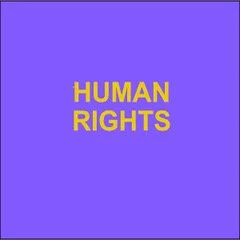By William A. Kandel
Four major principles underlie current U.S. legal permanent immigration policy: allowing families to reunify, admitting needed skilled workers, providing humanitarian protection, and fostering geographic diversity among lawful permanent residents (LPRs; also referred to as immigrants). These principles are embodied in provisions of the Immigration and Nationality Act (INA) for family-sponsored immigration, employment-based immigration, the U.S. refugee and asylee programs, and the diversity immigrant visa, respectively. Additional INA provisions provide LPR status but account for relatively few immigrants. Among these are special immigrant visas for certain Iraqis and Afghans employed by U.S. Government and their spouses and children; cancellation of removal for foreign nationals in removal proceedings; U nonimmigrant visas for crime victims who assist law enforcement agencies; and T status for human trafficking victims. As defined in the INA, the term “immigrants” is synonymous with LPRs, also known more informally as green card holders, and refers to foreign nationals who come to live lawfully and permanently in the United States. Foreign nationals can either apply to adjust from a temporary, typically nonimmigrant status to LPR status from within the United States, or apply for an immigrant visa from a U.S. embassy or consulate and request admission as an LPR upon arrival to the United States from abroad. The INA imposes an annual worldwide permanent immigration level of 675,000 persons: 480,000 family-sponsored immigrants, made up of family-sponsored “immediate relatives” and “preference immigrants”; 140,000 employment-based immigrants; and 55,000 diversity immigrants. However, the INA worldwide limit is a permeable cap that is regularly breached because immediate relatives and asylees are not numerically limited. In addition, the number of refugees admitted each year is determined by the President in consultation with Congress. As a result, the number of individuals approved for LPR status each year typically exceeds the INA numerical limits that are intended to process this demand fairly and in accordance with the national interest. In FY2023, the United States granted LPR status to 1,172,910 foreign nationals. The INA further imposes, for family-sponsored preference and employment-based immigrants, a per-country limit of 7% of their annual worldwide levels. The 7% limit is intended to prevent nationals of one or a few countries from dominating immigrant flows. For countries that send many prospective immigrants to the United States, the 7% limit often results in years-long waits for LPR status. From FY2014 to FY2023, the United States granted LPR status to an average of about 1 million foreign nationals each year. Of these, 65% acquired LPR status as family-based immigrants, 16% as employment-based immigrants, 11% as refugees and asylees adjusting to LPR status, 4% as diversity immigrants, and 4% as other immigrants. On average, 54% of all immigrants adjusted to LPR status from within the United States during this time. Top immigrant source countries over the period included Mexico (14%), China (7%), India (6%), the Philippines (5%), and the Dominican Republic (5%). In FY2024, an estimated 4 million prospective family-sponsored preference immigrants possessed approved immigrant petitions and were waiting overseas to apply for a statutorily numerically limited immigrant visa. In addition, the U.S. Department of Homeland Security’s U.S. Citizenship and Immigration Services (USCIS) has approved a sizeable number of petitions for family-sponsored preference and employment-based immigrants based in the United States and overseas who represent an indeterminate number of prospective immigrants in a corresponding and sometimes overlapping queue. USCIS also has about 230,000 pending petitions for U nonimmigrant status pertaining to crime victims which, if approved, would make these petitioners eligible for LPR status. Proponents of reducing permanent immigration often contend that family-sponsored immigration allows relatively large numbers of foreign nationals to settle permanently in the United States without regard to their skills, education levels, potential contributions to the U.S. economy or potential fiscal impacts on U.S. taxpayers. Others argue that family-sponsored immigration should be limited to immediate relatives of U.S. citizens and LPRs. Still others support limiting employmentbased LPRs to only very highly skilled workers, admitting employment-based immigrants using merit-based point systems instead of or in addition to employer sponsorship, and eliminating the diversity immigrant program. Proponents of increasing permanent immigration typically emphasize the positive impacts of skilled and other migration generally to the U.S. economy, the need for more workers in labor-short occupations and industries, or concerns over demographic trends that portend future U.S. population decline.
Washington, DC: Congressional Research Service 2024. 27p.






















